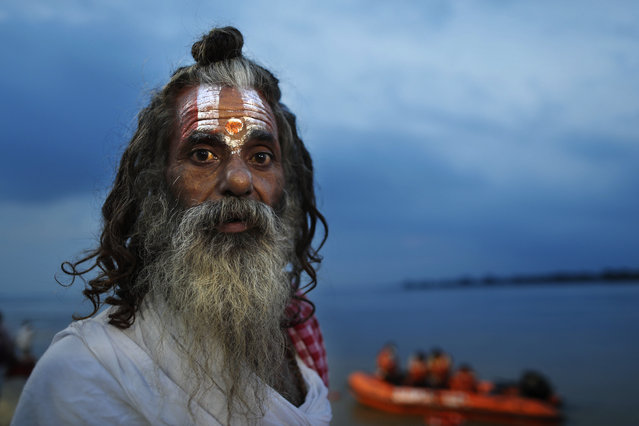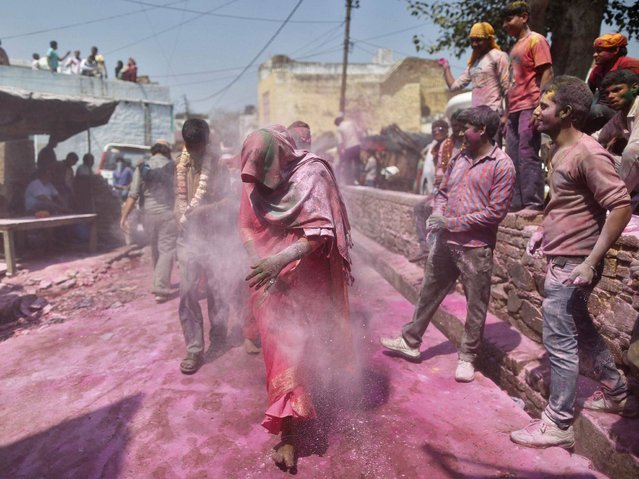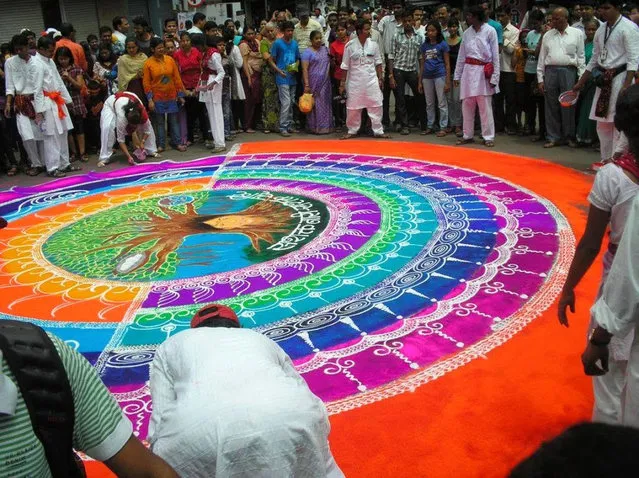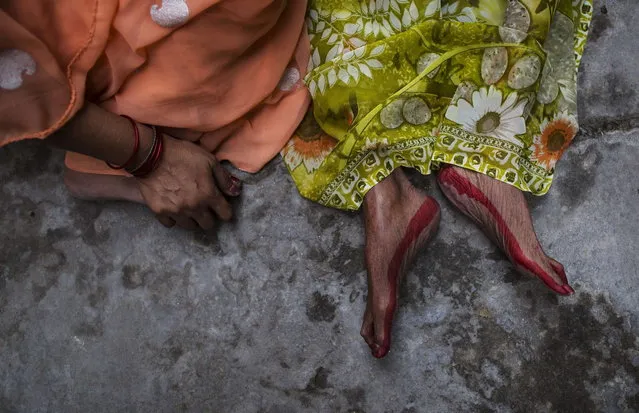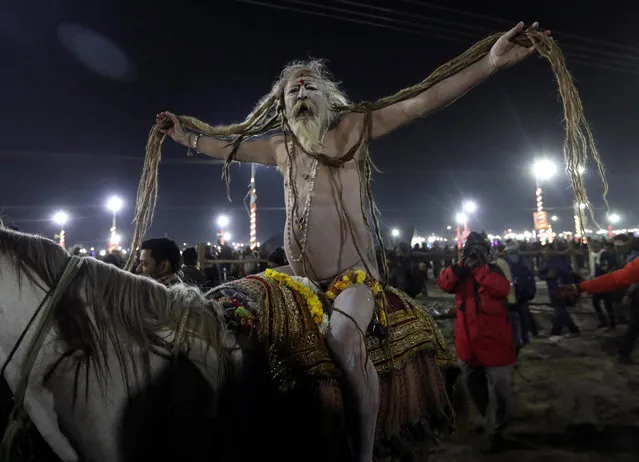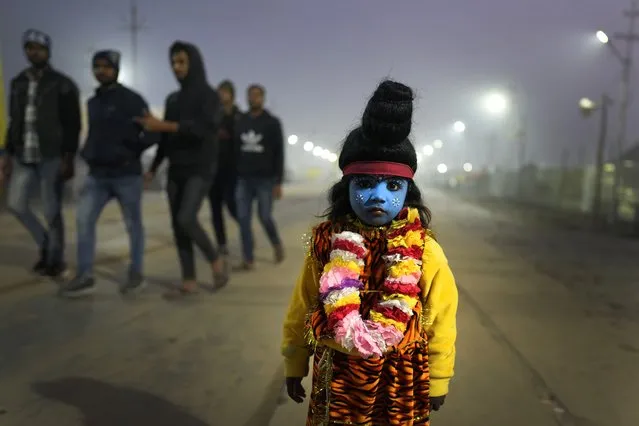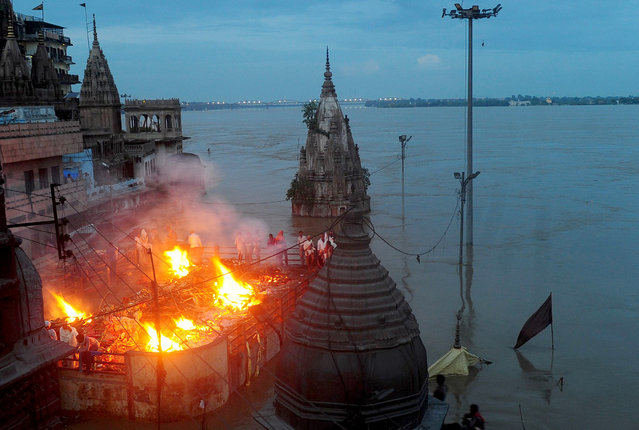
Indian mourners perform a cremation on the roof of a building overlooking The Manikarnika Ghat in Varanasi on August 23, 2016. India's holy city of Varanasi has been forced to halt cremations along the banks of the sacred river Ganges as deadly floods from monsoon rains hit parts of the country, an official said. More than 100,000 people have been forced from their homes in recent days in northern Uttar Pradesh and neighbouring Bihar states as rain-swollen rivers burst their banks. (Photo by Sanjay Kanojia/AFP Photo)
28 Aug 2016 09:57:00,post received
0 comments

